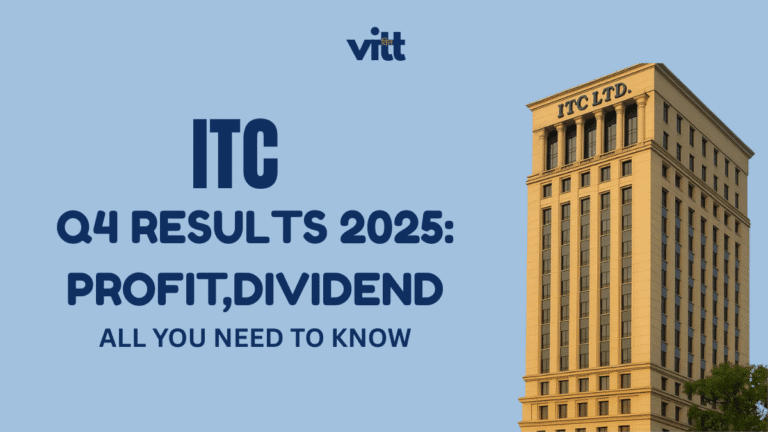
AI Robo Advisors

Photo Credit : International Banker
Keywords
Research suggests that AI-enabled robo advisors are bringing specialised wealth management to India’s middle class by arbitraging costs and providing 24/7 access.
Robo advisors are expected to provide, by algorithm, a consistent investment advice, which can be considered as partially filling the gaps in traditional services for the middle-class investors.
The evidence leans toward an early stage in India’s development, along with trust and customization issues, but they promise future growth.
Introduction
Robo advisors are digital platforms that employ AI and algorithms for automated financial planning and investment management, with little to no human interaction. For India’s burgeoning middle class, estimated to be around 70 million households with an annual income of ₹5 lakh or above, robo-advisors are a game-changer. They offer cheap access to wealth management, which was earlier the forte of high-cost traditional advisors. This article will examine how you benefit from robo-advisory services, their impact on the ground, expert opinions, and their future possibilities.
Context
India’s wealth management industry has long catered to high-net-worth individuals through private banks and boutique firms, leaving the middle class underserved. As a middle-class investor, you might rely on banks, mutual fund distributors, or insurance agents, but these services are not often deep and are sometimes barely personalized.
With the increasing penetration of the internet and smartphones, This digital solution by the robo advisors employs AI and algorithms to curtail investment and tailor portfolios based on your risk profiles and goals, thereby making financial advice more accessible and affordable. However, there are indications from research that robo-advisors in India are, as yet, in their infancy and that adoption is influenced by trust or anxiety and preference for human advisors, thus exhibiting potential hurdles towards building your confidence.
Real World Impact
In its concrete sense, the robo advisor can help you as a middle-class investor. They reduce costs. They charge fees often less than 1% of AUM, whereas traditional advisors tend to charge large fees. Platforms like Groww, FundsIndia, and Scripbox allow 24/7 access to portfolio management, which is best suited for tech-savvy youngsters. A data-driven algorithmic approach ensures consistent investment strategies with less bias and automatic portfolio rebalancing based on data-oriented algorithms to two match your goals. Previously, when professional advice was not available to you, you could now make decisions and this ensures better financial inclusion.
For example:
- Cost savings: You pay an annual fee of ₹1,000 to the robo-advisor, Arthayantra, and other robo-advisors, such as FundsIndia, charge no fees; instead, they earn through commissions, which operates to your benefit.
- Accessibility: With over 624 million internet users in India, robo advisors can reach you easily, especially if you prefer digital solutions.
- Financial Inclusion: AI-driven credit scoring using alternative data (e.g., transaction history) helps underserved populations access loans, supporting startups like Lendingkart and KreditBee, which could benefit you if you need credit.

Expert’s Opinion
Experts see potential in robo-advisors for you but stress the need for customization for India. A Groww blog notes, “Robo advisors need customization for India due to economic and regulatory differences, not a direct copy of US models,” highlighting differences like investment in mutual funds versus ETFs and manual transaction initiation.
While promising, experts acknowledge challenges like building trust among investors like you who prefer human interaction. Vyshak Iyengar, writing on Medium, suggests big fintech players like Paytm and Zerodha could drive growth, leveraging their large user bases to introduce robo-advisory features, democratizing wealth management further for you.
Key points from experts:
- Customization: Indian robo advisors must adapt to local preferences, such as mutual funds over ETFs and flat annual fees instead of AUM-based fees, to suit your needs.
- Trust Building: You might be hesitant due to a preference for human advisors, especially for complex decisions, but robo-advisors aim to address this with transparency.
- Growth Potential: Large fintech platforms can integrate robo-advisory services, leveraging their existing user base to scale adoption, making it easier for you to access.
vitt’s take..
(vitt – Where India Reads is a space for making Business and finance stories digestible and relevant to India’s digital generation.)
Conclusion
Robo advisors present compelling sorts for wealth management, offering inexpensive, easy-to-access, and data-dependent consulting. Yet, to fulfill their full potential, they must deal with local concerns such as trust and customization. With further advances in AI and machine learning, robo advisors could be integrated into banking and insurance operations to provide a set of holistic services for the customer. Given regulatory support and consequent popularity among investors, they could become an important part of the Indian financial landscape to empower the customer in managing finances.
FAQ’s
1. What is a robo-advisor, and how does it differ from traditional financial advisors?
- A robo-advisor is a digital platform that uses AI and algorithms to provide automated financial planning and investment management services with minimal human intervention. Unlike traditional financial advisors, who offer personalized, human-driven advice and often charge higher fees (typically 1-2% of AUM), robo-advisors are more cost-effective, accessible, and scalable, making them ideal for middle-class investors.
- Investopedia – What Is a Robo-Advisor? notes that robo-advisors operate with little to no human supervision, focusing on algorithm-driven strategies.
2. How do robo-advisors use AI to manage investments, and how does this work in India?
- Robo-advisors use AI to analyze market data, assess risk profiles, and create personalized investment portfolios. They typically start with an online survey to gather information about your financial situation, goals, and risk tolerance, then use algorithms to recommend and manage investments.
- In India, they often focus on mutual funds due to regulatory preferences, as noted in Bajaj Broking – Robo Adviser in India- Meaning, Working & Key Benefits. However, Indian regulations allow automation only for the initial investing process, requiring user consent for further changes like rebalancing, as per marketfeed – What are Robo Advisors? Do They Exist in India?.
3. Are robo-advisors regulated in India, and how can I ensure they are safe?
- Yes, robo advisors in India are regulated by the Securities and Exchange Board of India (SEBI), as defined in a 2016 consultation paper, according to Business Today – Hello Robo: How robo-advisory firms are revolutionising financial services in India.
- To ensure safety, choose platforms that are SEBI-registered, have transparent fee structures, and provide clear terms of service. Additionally, check for insurance or protection plans (e.g., SIPC) they offer for client assets, as mentioned in Investopedia – What Is a Robo-Advisor?.
4. What are the typical fees charged by robo-advisors in India, and how do they compare to traditional advisors?
- Robo-advisors in India often charge flat annual fees (e.g., ₹1,000, as seen with Arthayantra) or commission-based models, which are significantly lower than the percentage-based fees (often 1-2% of AUM) charged by traditional advisors. Groww – Robo Advisory for Investments in India notes that this affordability makes them accessible for middle-class investors, compared to the high costs of human advisors, as highlighted in Trade Brains – A Quick Guide to Robo Advisors in India.
5. Can robo-advisors handle complex investment needs, such as tax planning or estate planning?
- Robo-advisors are primarily designed for basic investment management, such as portfolio allocation and rebalancing, and may not fully address complex needs like tax planning or estate planning. FinEdge – What Are The Pros & Cons of Robo Advisors ? suggests they are more suited for DIY investing, with limited capacity for personalized, complex strategies.
- For such needs, hybrid models combining robo and human advice might be more suitable, as noted in Wipro – Robo Advisors for Wealth Management Services.
6. Which Indian companies offer robo-advisory services, and what are their key features?
- Popular robo-advisors in India include:
- Groww: Offers mutual funds, gold ETFs, and tax-saving instruments with low fees and user-friendly interfaces.
- FundsIndia: Provides a range of mutual funds, goal-based investing, and human support options, as seen in FundsIndia – FAQs About Investing in Stocks, Mutual Funds.
- Scripbox: Focuses on mutual funds and SIPs with easy-to-use platforms, though limited to regular funds, according to Groww – Robo Advisory for Investments in India.
- Arthayantra: Known for automated financial planning and low-cost advisory services, charging flat annual fees.
- These platforms cater to middle-class investors with features like automated portfolio management and educational resources.
7. How can I get started with a robo-advisor, and what information do I need to provide?
- To start, create an account on a robo-advisory platform, provide basic personal and financial details (e.g., PAN, bank account, income), and complete a risk assessment questionnaire. Angel One – What is Robo-Advisor? Features and Benefits explains that the platform then creates a personalized investment plan based on your inputs, typically requiring minimal effort beyond initial setup.
8. What are the limitations of robo advisors, especially in the Indian market?
- Limitations include:
- Limited customization for highly personalized portfolios, as noted in FinEdge – What Are The Pros & Cons of Robo Advisors ?.
- Inability to handle very complex financial situations, such as estate planning.
- Requirement for user consent for certain transactions due to Indian regulations, as per Zerodha – Robo-advisors are dead, long live robo-advisors.
- Lack of the personal touch and emotional support provided by human advisors, which can be a barrier for trust, according to ScienceDirect – Adoption of artificial intelligence in financial services: The case of robo-advisors in India.
9. How do robo-advisors compare to traditional financial advisors in terms of personalization and service?
- Robo advisors provide standardized, algorithm-based advice, which may lack the personal touch of human advisors. However, they offer consistent, data-driven strategies and are more cost-effective, making them suitable for middle-class investors seeking affordable, long-term wealth management. Share India – What Is a Robo-Advisor? Learn More at Share India highlights that robo-advisors reduce human error and emotional decision-making, while traditional advisors offer more personalized, face-to-face service.
10. Is my investment safe with a robo-advisor, and what protections are in place?
- Investments through robo advisors are subject to market risks, but the platforms are regulated by SEBI. Ensure the robo-advisor is SEBI-registered and check for any insurance or protection plans (e.g., SIPC) they offer for client assets. ClearTax – notes that platforms like FundsIndia are registered with entities like AMFI and BSE, ensuring a secure environment.
11. How do robo-advisors in India differ from those in other countries, like the US?
- In India, robo-advisors focus more on mutual funds, require user consent for transactions beyond initial investments, and often use flat or commission-based fee structures. In contrast, US robo advisors emphasize ETFs, offer fully automated services, and typically charge AUM-based fees (0.25-0.50%). These differences stem from regulatory and market maturity variations.
12. Are robo-advisors affordable for middle-class investors in India?
- Yes, robo-advisors are designed to be affordable, with low or no account minimums and fees significantly lower than traditional advisors. [Trade Brains – A Quick Guide to Robo Advisors in India](https://tradebrains.in/robo-advisors-in-india/) notes that platforms like Scripbox and Arthayantra cater to small investors, making them accessible for middle-class households.
13. How does a robo-advisor select investments for my portfolio?
- Robo-advisors use algorithms based on your risk profile, investment goals, and time horizon to select a diversified mix of investments, typically mutual funds in India. Angel One – explains that they continuously monitor and adjust the portfolio to align with your objectives, reducing the need for manual intervention.
14. Can I customize my investment choices with a robo-advisor?
- Some platforms allow limited customization, but generally, robo-advisors manage portfolios automatically based on their algorithms. For full control, you might need to use a different type of investment platform, as noted in FinEdge
15. What measures do robo-advisors take during market volatility?
- Robo advisors typically follow a long-term investment strategy and may automatically rebalance portfolios to maintain the desired asset allocation. This helps mitigate risks during volatile markets by ensuring the portfolio stays aligned with your goals, as per Share India
16. How frequently do robo-advisors review and adjust portfolios?
- Most robo-advisors continuously monitor markets and adjust portfolios as needed, often automatically rebalancing when asset allocations deviate from the target. This ensures your investments remain aligned with your risk profile and goals, according to Wipro
17. Do robo-advisors offer any human support or consultation?
- Some robo-advisors offer hybrid models with access to human financial advisors for more complex needs or upon request. Others are fully automated, but you can always reach out to customer support for clarifications, as seen with FundsIndia
For more such updates on Daily news, Business, startups and Loan Management subscribe to vitt – Where Bharat Reads….




